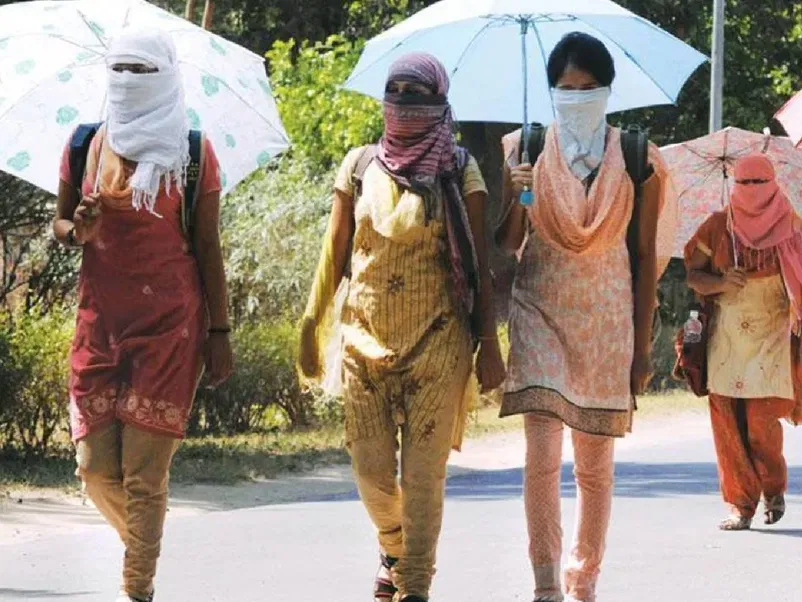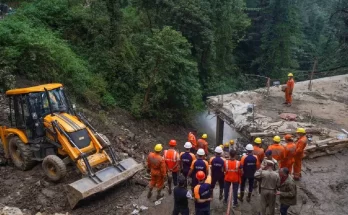Sea levels rose, undernourishment peaked, says WMO’s State of Global Climate study

Representational image. (File photo)
New Delhi: Heatwaves topped the list of extreme weather events in 2022, even as the global mean temperature was 1.15 (1.02-1.28) degrees Celsius above the 1850-1900 average, according to the World Meteorological Organization’s (WMO) State of Global Climate 2022 report released on Friday.
There were as many as 117 heatwave events witnessed across the globe, far more than other extreme events such as drought, rain/wet spell, cold wave, or even cyclone.
The report rightly points out that the years 2015 to 2022 were the eight warmest in the 173-year instrumental record. Despite ongoing La Nina conditions, 2022 was the fifth or sixth warmest year on record.
“While greenhouse gas emissions continue to rise, and the climate continues to change, populations worldwide continue to be gravely impacted by extreme weather and climate events,” said WMO Secretary-General Petteri Taalas.
Referring to the heatwaves in the 2022 pre-monsoon season in India and Pakistan that caused a decline in crop yields, the report pointed out that the combination of the heatwaves and the banning of wheat exports and restrictions on rice exports in India after the start of the conflict in Ukraine “threatened the availability, access, and stability of staple foods within international food markets and posed high risks to countries already affected by shortages of staple foods.”
“As of 2021, 2.3 billion people faced food insecurity, of which 924 million people faced severe food insecurity. Projections estimated 767.9 million people facing undernourishment in 2021, 9.8% of the global population. Half of these are in Asia and one third in Africa,” it said about food insecurity.
The WMO also pointed out how record-breaking heatwaves affected Europe during the summer. “In some areas, extreme heat was coupled with exceptionally dry conditions. Excess deaths associated with the heat in Europe exceeded 15,000 in total across Spain, Germany, the UK, France, and Portugal,” it said, adding, “China had its most extensive and long-lasting heatwave since national records began, extending from mid-June to the end of August and resulting in the hottest summer on record by a margin of more than 0.5 °C. It was also the second-driest summer on record.”
Director General of the India Meteorological Department (IMD), Dr Mrutyunjay Mohapatra, told News9 Plus, “It is no surprise. If the temperature rises, the frequency of heatwaves will increase.”
However, “heatwave conditions are not uniform across the globe,” explained Mohapatra. The geography, local weather, and definition applied by respective countries make for a heatwave. “For instance, in the United States of America, the threshold temperature is different, and they declare it after that temperature continues for five consecutive days. And in India, we do it only after two consecutive days,” Mohapatra added.
In 2022, India witnessed the hottest March and April since the record-keeping started systematically. Heatwave-like conditions prevailed in 16 states of India from March 11 to April 24, 2022. There were 280 heatwave days from March 11 to May 18 in 2022, the highest in 12 years, as per the State of India’s Environment in Figures 2022 brought out by the environment think tank, Centre for Science and Environment (CSE).
Other findings of the WMO report
– Concentrations of the three main greenhouse gases – carbon dioxide, methane and nitrous oxide – reached record highs in 2021, the latest year for which consolidated global values are available (1984-2021). The annual increase in methane concentration from 2020 to 2021 was the highest on record.
– Global mean sea level continued to rise in 2022, reaching a record high for the satellite altimeter record (1993-2022). The rate of global mean sea level rise has doubled between the first decade of the satellite record (1993-2022), 2.27 mm per year) and the last (2013-2022, 4.62 mm per year).
– In the hydrological year 2021/2022, a set of reference glaciers with long term observations experienced loss much larger than the average over the last decade. Six of the ten most negative mass balance years on record (1950-2022) occurred since 2015.
– Antarctic sea ice fell to lowest extent on record.
(This story first appeared on news9live.com on Apr 28, 2023 and can be read here.)



